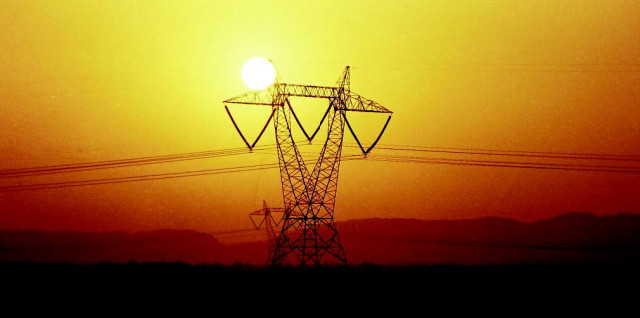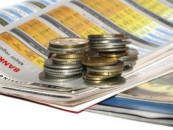Scope of expanding power tariff incentives
Lower tariff may help boost electricity demand, utilise idle plant capacity

The government has announced an incentive package for industrial consumers of electricity with the aim of reducing the cost of production and thus increasing industrial output, employment and exports.
The industry has generally hailed it, although some suggestions for improvement have been made, and contradictions of small and medium enterprises (SMEs) vs large industries have surfaced, especially in the steel sector.
The industrial sector’s electricity consumption is around 10% of the total consumption. Tariff concession may not result in a very large amount in absolute terms or may not result in any loss of revenue through subsidies.
The government did introduce a lower winter-based tariff last year on increased consumption, which is still valid. There is zero-rated industrial tariff of 7.5 US cents (Rs11.58) per unit including all charges, which is quite competitive with regional and global tariff trends.
A general decrease in industrial tariff had been discussed earlier – Rs13 per unit as opposed to Rs18. However, a general decrease has not happened. It is for increased consumption only. It is in some way a conservative approach avoiding some risks, as would be discussed later.
What is the motivation for reducing electrical tariff, one may argue, when there is circular debt of Rs2.3 trillion, which may add up another trillion in the next five years? The cost is already higher than the tariff, creating deficit which accumulates in the form of circular debt.
The main driver is the lack of capacity utilisation partly due to excess capacity and partly due to lower demand as a consequence of general economic slowdown and slack industrial growth.
Multiple benefits
Lower tariff may boost demand and thus increase capacity utilisation. If incentives to the industrial sector succeed in generating demand, it would have multiple benefits.
First of all, the electricity sector loss may decrease due to higher demand and increased capacity utilisation. Ironically, a layman reaction would be that decreasing prices may cause revenue loss.
Winter demand for electricity in Pakistan is very low contrary to other markets, in major part due to gas-based domestic sector, causing gas crisis in winter. Winter demand drops to half - as low as 8,000 megawatts.
It appears that those who use ACs for cooling are not using them for heating. In addition to cooking, water heating and space heating are all based on gas. In Western economies, most of this is based on electricity.
Gas appliances are inefficient against electrical appliances. In case of space heating, the trend is shifting towards inverter AC heating, which is much more efficient than electrical resistance heating or gas heaters. Consumers would have to be made aware of these peculiarities.
The objective of incentivised tariff is twofold - one, to increase revenue and profit (and in the instant case, loss reduction), and second, (the seller being government) to expand output of the user and economy.
In any optimisation model that would be developed for the incentivised tariff, the objective function would include the two variables as mentioned earlier.
The risk is that consumer consumption and output may not increase and the revenue and profit of the seller may actually decrease. To minimise this risk, the planner has to provide concomitant policies for sectoral expansion and output.
Electricity price alone may not be the only prerequisite for expansion. The incentives should be sustainable and valid for at least a medium term of three to five years so that the user industry has enough time and incentive to plan expansion and benefit from the incentive.
Finally, the incentive shouldn’t be unrealistically low so as not to be sustainable and that it does not foster inefficient industries artificially.
Scientific studies
Incentive systems are a complicated or complex business. Although we need urgent steps and policies at the moment, scientific studies are required to have an optimum tariff. This may involve such esoteric tools as the game theory, Markov analysis and linear programming.
Universities may be encouraged to initiate this kind of exercise, although many initiatives and efforts (in the past my own efforts at Planning Commission) to involve universities in applied research of this nature could not succeed.
Professors are rewarded for publishing papers in international journals. Local problems are not at the frontiers of knowledge. The nature of our problems is such that these have been solved and handled several decades earlier. Hence, foreign consultants are ubiquitous – hired through international financial institutions (IFIs) mostly.
Following the announcement of tariff incentive package, peak rates, which are 25% higher for industries, have been done away with for all industries. For SMEs, 50% reduction in tariff has been given on the additional units consumed between November 1 and June 30 and for all industries the tariff concession is 25% on the additional units consumed for the next three years.
The important point that has to be noted is that the concession is on additional consumption. Thus, it is an incentive for those who are willing to expand their industrial output.
Secondly, the net incentive offered is for all industries by doing away with the 25% higher peak hours tariff. Second shift may be encouraged due to this concession.
Thirdly, it is a seasonal tariff spread largely over a low electricity demand period. One has to wait and see the net impact of the package as there are other factors also which cause expansion in industrial output.
Small enterprises
SMEs are engines of growth and employment. SME growth may also have an impact on poverty reduction. This sector has suffered badly. Large industries are able to pass on their costs or even manipulate the market and power system to earn extra benefits as we are seeing in the case of sugar, fertiliser and others.
SMEs may not have such leverage. However, it is a debatable question whether the reduction in industrial tariff should be general or certain sectors may be excluded.
Also, the definition of SME may be problematic, for instance, the size of the enterprise and whether offices have to be included or excluded.
SMEs may be in competition with large industries in the same sector such as steel. The latter has raised objections to the larger incentive (50% for SMEs vs 25% for large industries) given to SMEs in that sector. Such sectoral issues may have to be sorted out.
Peak or Time of Use (ToU) tariff has been done away with for the industrial consumers. One may have to seriously consider the pros and cons. The ToU tariff is a simpler system to introduce supply-demand-price linkages in the tariff system.
Under retail competition, for which there is wider support, hourly tariff is being introduced in many jurisdictions. The wholesale market yields hourly generation prices to which is added supply overheads to get the hourly tariff.
The ToU tariff system may have to be expanded to night-time tariff as well. At night, electricity demand is low. Some industries, eg IT, may benefit and expand under a low night-time tariff. Some traditional industries may introduce a third shift to increase the industrial output.
Concluding, incentivising down the electrical tariff is to be encouraged and supported. Increase in tariff apparently shows it raises revenue while a decrease in tariff appears to reduce the revenue. In actual terms, opposite may be the case due to demand effect.
Pakistan’s gas resources are going down while electricity capacity is increasing. Conversion from gas to electricity should be a major criterion in devising an incentive programme, although in some cases combined cycle-based gas use is more efficient, which also helps some of the industrialists to fudge accounts for tax evasion purposes.
For the domestic sector, such conversion is highly advisable. Supply side may have to be slowed down and cheaper renewable and distributed energy may be fast-tracked to bring down the cost of supply, especially the fixed cost. There is a scope for expanding and improving the incentives.
The writer is former member energy of the Planning Commission
Published in The Express Tribune, November 16th, 2020.
Like Business on Facebook, follow @TribuneBiz on Twitter to stay informed and join in the conversation.



















COMMENTS
Comments are moderated and generally will be posted if they are on-topic and not abusive.
For more information, please see our Comments FAQ